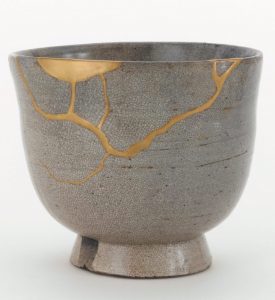Traditional Japanese crafts with a modern twist
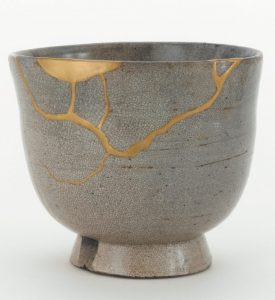 Traditional Japanese crafts like boro and kogin were originally developed hundreds of years ago to extend the life of objects or garments due to economic necessity. We now appreciate crafts like these for their beauty as well as for their functionality. They align with the Japanese concept of wabi sabi, which means finding beauty in imperfection.
Traditional Japanese crafts like boro and kogin were originally developed hundreds of years ago to extend the life of objects or garments due to economic necessity. We now appreciate crafts like these for their beauty as well as for their functionality. They align with the Japanese concept of wabi sabi, which means finding beauty in imperfection.Many Japanese crafts are still practiced today. Books and online tutorials on ikebana (the art of flower arranging), kintsugi (the art of repairing broken pottery with gold) and origami (the art of paper folding) are widely available. I'm going to feature my three favorite Japanese crafts in this article: boro and sashiko, kogin, and shibori.
Boro and sashiko
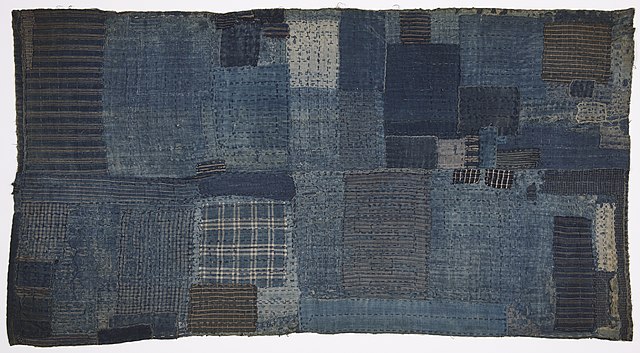
Child's sleeping mat with boro patchwork, late 19th century
The word boro comes from the Japanese boroboro meaning something tattered or repaired. Historically, new clothing was expensive in Japan and not affordable to many farmers and fishermen. People used boro techniquesto mend and patch worn out clothing to extend its useful life.
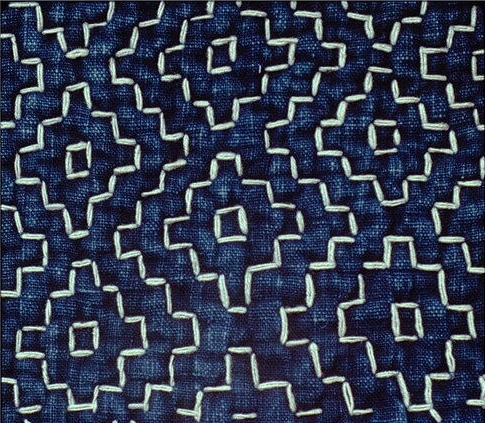 Sashiko means "little stabs" and refers to the use of straight running stitches in geometric patterns. People used these stitches to join together several layers of cloth for warmth and to reinforce areas of the fabric. Japanese used boro and sashiko together to mend garments and prolong their use.
Sashiko means "little stabs" and refers to the use of straight running stitches in geometric patterns. People used these stitches to join together several layers of cloth for warmth and to reinforce areas of the fabric. Japanese used boro and sashiko together to mend garments and prolong their use.What draws me to modern sashiko is the beauty of the indigo cloth set against the colorful threads used for stitching. I like the idea of continuing a long tradition even if my uses are decorative rather than by necessity. Because sashiko uses a simple straight running stitch repeatedly, I'm able to lose myself in the stitching without worrying whether I'm doing it correctly. It's also completely portable. I like to take my stitching out on the patio on beautiful sunny days and stitch as the birds sing.
Kogin
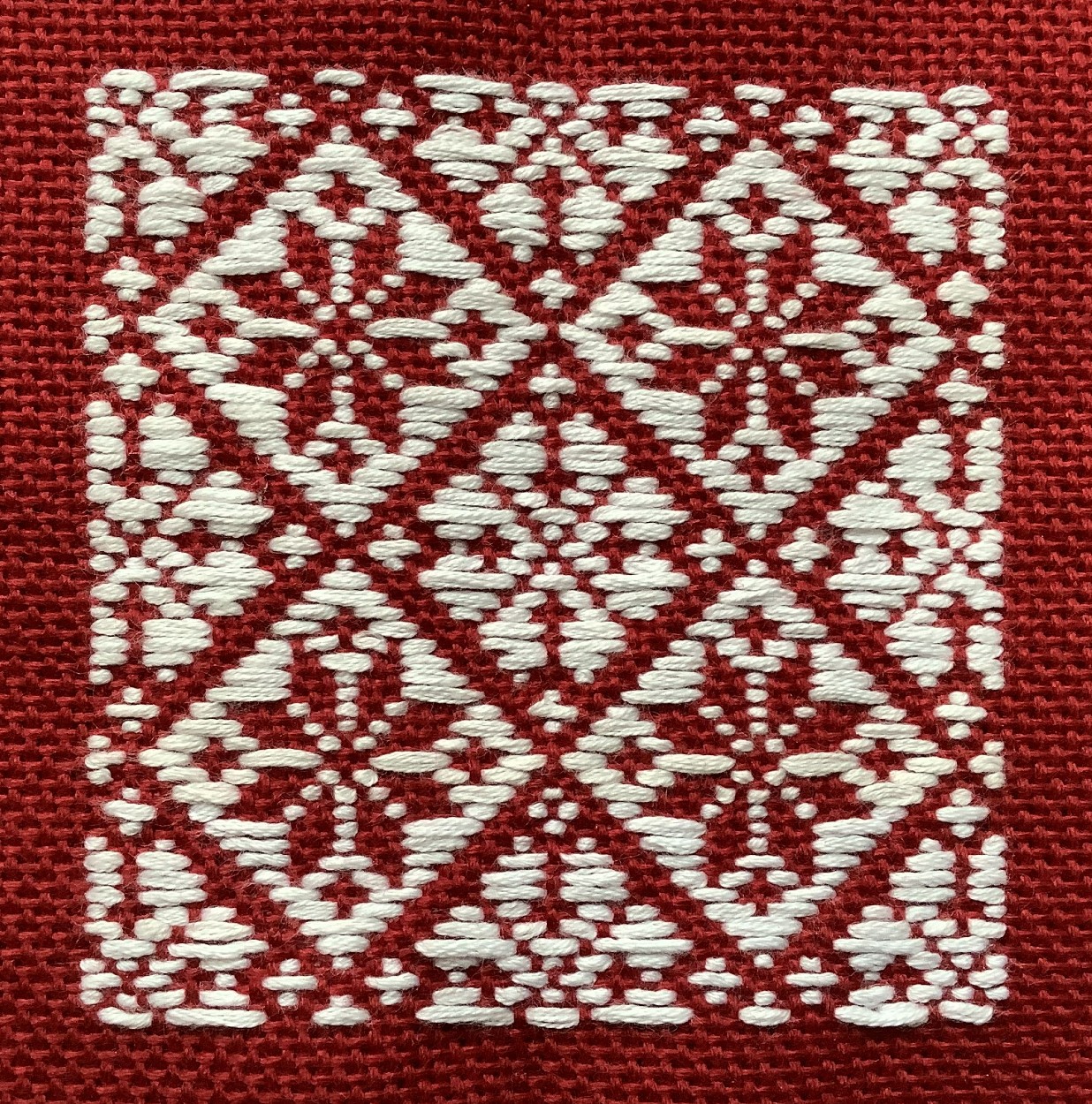 Kogin is another traditional Japanese sewing technique. Like sashiko, people used kogin to add warmth and to reinforce garments to protect them from the wear and tear of everyday use.
Kogin is another traditional Japanese sewing technique. Like sashiko, people used kogin to add warmth and to reinforce garments to protect them from the wear and tear of everyday use.Kogin is very similar to cross stitch in that it's a counted thread technique. If you have materials for cross stitch, you have everything you need for kogin. If you don't have the materials, check out a cross stitch kit to get materials to practice for free.
While cross stitches are in an X shape, kogin stitches go from side to side, usually over an odd number of threads (1, 3 or 5). I've done cross stitch for years. So stitching across the squares in the aida cloth rather than on the diagonal was a good challenge for my brain. It definitely took some getting used to, but I really like the results.
Shibori
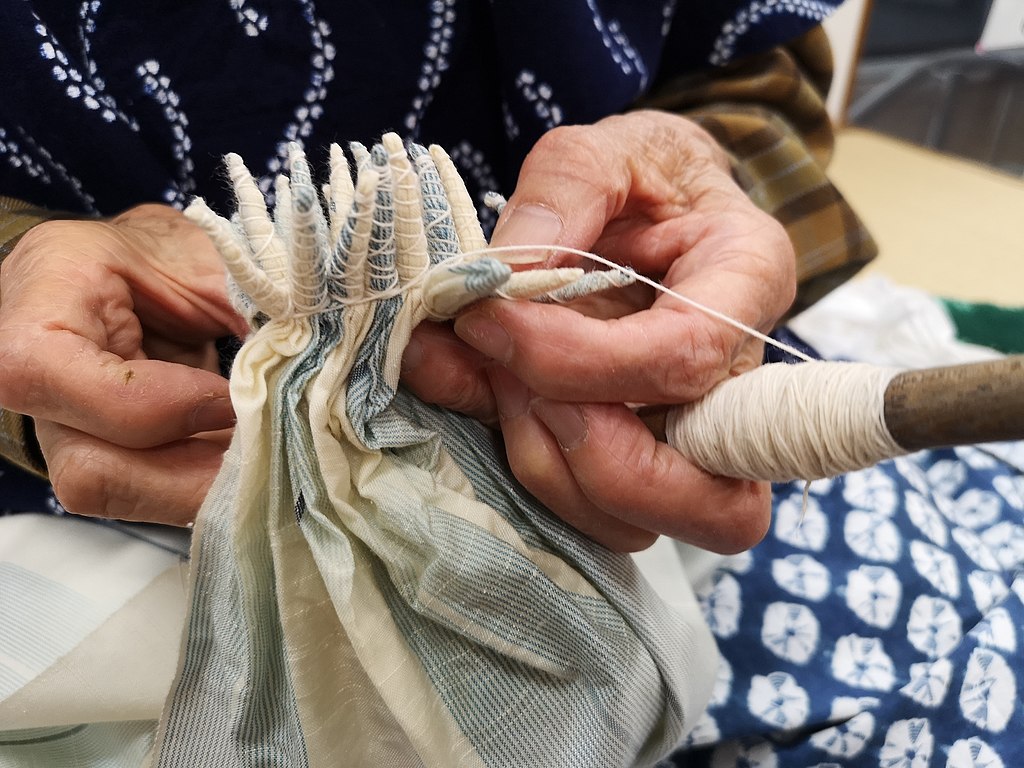
You can create different shibori patterns by manipulating the cloth according to established patterns. While this process will give you an idea of how the final design will look, the beauty of shibori is that the results aren't uniform. The outlines of the patterns are softened rather than hard-edged which gives the fabric an organic look.
If you like to experiment with fabric dyeing techniques, give shibori a try. You can use almost anything to scrunch up the fabric. I've used popsicle sticks, rubber bands, string and binder clips. As long as whatever you choose will survive the dyeing process, you can use things you already have around the house.
Tradition with a twist
The joy of being a modern crafter is our access to so many supplies that weren't available in the past. You can use Boro and sashiko for decoration in addition to practical mending, and you can use any fabric. The range of colors and types of threads for kogin stitching are almost limitless. You can use both synthetic and natural dyes with shibori to create any color. None of these crafts require a huge amount of investment in materials. I encourage you to give them a try. Experiment and have fun!











